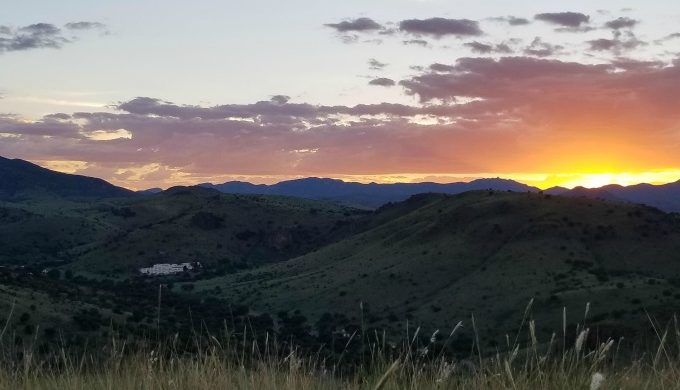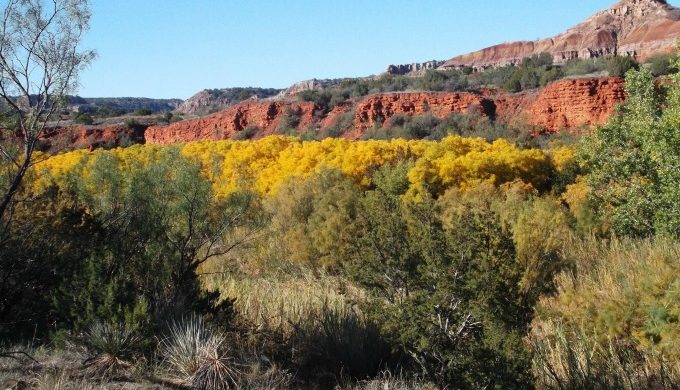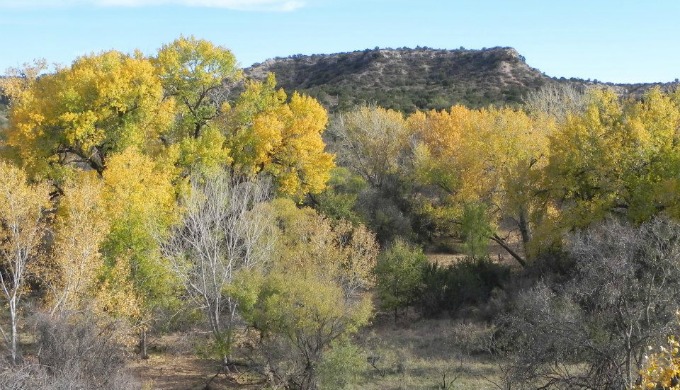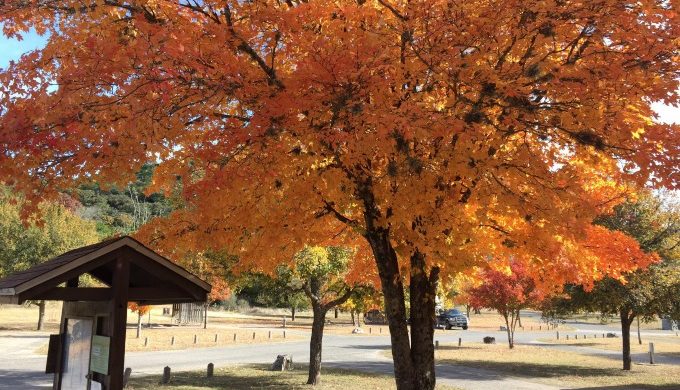Would you love to see the fall leaves changing colors but assumed that one would have to go somewhere like Vermont to witness it? Well, you’re in luck: Texas has plenty of trees whose leaves change color in the fall. But before we delve into the “wheres” of fall leaf exploring, let’s tackle the “whys” of fall foliage. Why do leaves change color in the fall?
Things to Do
5 Fall Foliage Texas Road Trips To Plan Now
An Interactive Map of Fall Foliage

Photo: www.smokeymountains.com
As the fall days begin to get shorter and shorter, the production of chlorophyll (the chemical that allows plants to absorb energy from light) in the leaves slows to a halt, eventually giving way to the ‘true’ color of the leaf. Beta-carotene is present in most leaves and, in the absence of chlorophyll, gives leaves an orange hue. Flavonol gives leaves a yellow color in the fall. Flavonol is always present in leaves (and also contributes to the yellow color of egg yolks) but it is not seen until the production of chlorophyll begins to slow. The Smokey Mountains website offers an interactive map, showing by date when your best chances at seeing fall leaves are by region. You can use it to determine the best time for visiting each region of Texas, in the hopes of witnessing some of nature’s fall artistry.
While you might be able to spot fall leaves in many places in Texas, state parks are some of the best places to witness this most exciting act of nature.
Here are five Texas State Parks that offer the most promising glimpses of showy fall leaves:
1. Davis Mountains State Park

Photo: Facebook/Davis Mountains
Home to the cottonwood tree, which turns a brilliant yellow during fall, Davis Mountain State Park typically offers both camping and lodge accommodations, but their iconic Indian Lodge is closed through January for repairs. In addition to the fall foliage viewing, the Davis Mountains are a great place to bird watch. Davis Mountain State Park is high in the mountains of west Texas and feels like a world away.
2. Palo Duro Canyon State Park

Photo: Facebook/Palo Duro Canyon State Park
Often called the “Grand Canyon of Texas,” Palo Duro Canyon is the second largest canyon in the country and lies in the heart of the Texas Panhandle. The juxtaposition of the vibrant leaves against the rugged mountainous landscape makes Palo Duro Canyon an excellent place to visit in the autumn.
3. Caprock Canyons State Park

Photo: Facebook/Caprock.Canyons
Also in the Panhandle, Caprock Canyons is one of the few places in Texas where you can still see bison roaming. Caprock Canyons boasts 90 miles of hiking trails, so you’ve got lots of territory available for leaf viewing.
4. Lost Maples State Natural Area

Photo: Facebook/Lost Maples State Natural Area
Lost Maples State Natural Area is probably one of the most popular places in the state to see the fall foliage – and for good reason. Located just two hours northwest of San Antonio, Lost Maples gives you a lot of “bang for your buck” when it comes to activities. Hiking, camping, fishing, and birding are all popular activities in this scenic park.
5. Lake Bob Sandlin State Park

Photo: Facebook/Lake Bob Sandlin State Park
Located in the far northeast corner of the state, Lake Bob Sandlin State Park offers beautiful water and bright autumn leaves. Another popular spot for birders, visitors may even spot eagles at Lake Bob Sandlin State Park during the winter months.
The weather in the fall in Texas is some of the best of the year. Whether you set out to see fall foliage or not, you’re sure to stumble upon an Oktoberfest or another fall festival in any Texas town this time of the year. It’s a wonderful reward for our punishing summers and a great time to explore new parts of the state. To learn more about fall foliage in Texas, visit the Texas Parks and Wildlife website.



